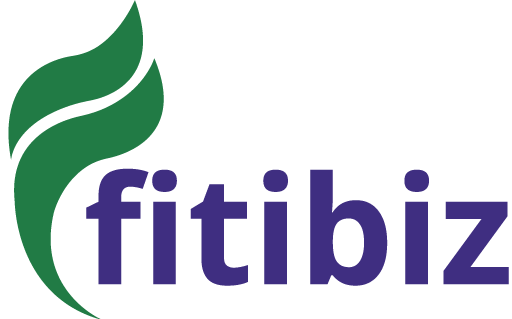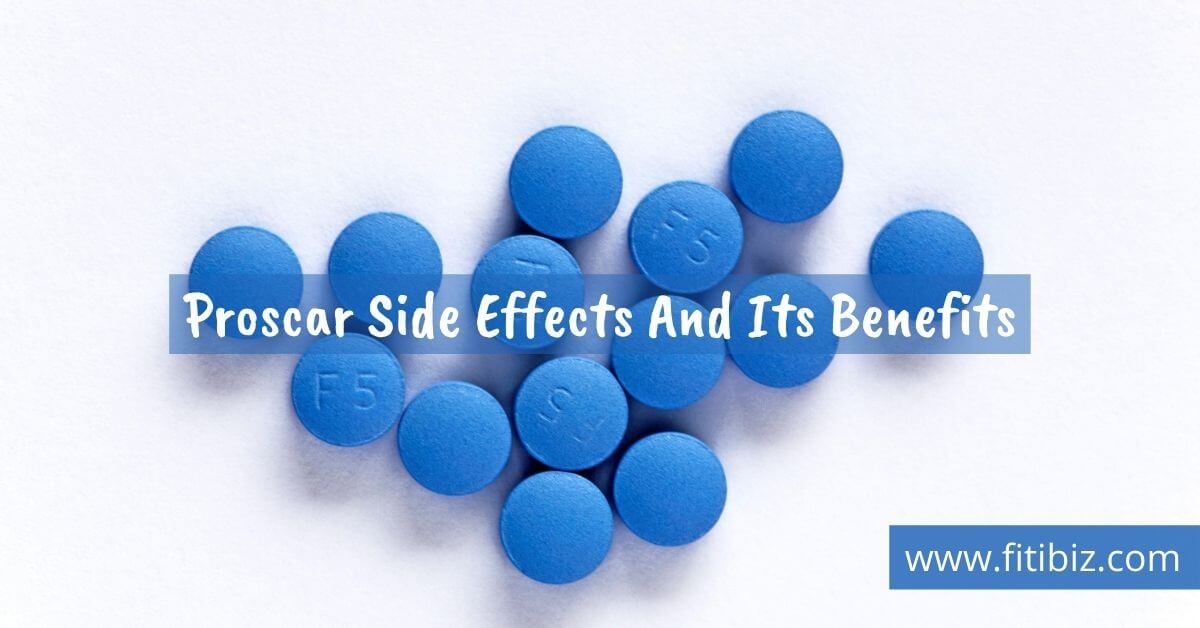Lower Back And Hip Pain On One Side: 22 Ways To Fix Your Age Related Back pain

The back pain may come and go, sometimes it brings temporary comfort. Also, back pain followed by frustration. If the back pain continues for three months longer, then it is considered for long-term or age-related back pain. The spine in the human body column is of 24 bones stretching from head to bottom, covering the spinal cord.
There are also facets which are the tiny joints that link the vertebrae, or bones. In between, the discs are filled with a substance server like jelly as a cushion, and rope-like ligaments balance the spine. And, if you do not know the reason behind chronic back pain then it becomes more difficult to deal with, so there are the causes of age-related back pain.
What Age-related Back Pain Can Affect?
Pain in the back or neck is much like gray hair and forgetting where you put the keys seems to happen as we grow older. But the question is one of degree. How much back pain is abnormal? Is that sharp stabbing feeling just the creakiness that comes with aging or the symptom of a bigger problem? Well, this is a normal question many people have.
We will discuss some of the signs of an aging spine and some symptoms that might indicate disease or injury. Penn Medicine offers an online assessment test to help you learn when it is time to see a doctor for your age-related back pain. Well, you may also be thinking that it is normal or not? But it is normal to feel back or neck pain as your age grows. Aches and pains in the spine are just facts of life.
They are incredibly common some estimates say that upwards of 85% of people will experience some sort of age-related back pain. According to experts, most people start noticing back pain between the ages of 40 and 60. However, there is not necessarily cause for concern if it starts younger some people begin to feel the effects of an aging spine as young as 30. While a little bit of spine pain is perfectly normal.
You should also see a physician if you have these symptoms in addition to age-related back pain such as weakness or fevers, unexplained weight loss, increased pain at night, bladder or bowel incontinence, pain that shoots down the legs, numbness or tingling, severe pain that does not improve, not improved even after you have rested, pain that occurs after you have taken a fall or injured yourself.
Lower Back Pain Causes
There are some most common reasons for developing the problem of back pain after the age of 50, These reasons are as follows:
- Arthritis in the spine can cause a decrease in the space around the spinal cord. The lower back can be simulated by osteoarthritis.
- Osteoporosis, if your bones become spongy and hard but easy to break, then the spine vertebrae can develop compression.
- Herniated or bulging disc, In between the bones or vertebrae, the discs act as cushions in your spine. And the jelly-like substance inside the disk can rupture or bulge and press on a nerve.
- Also, a condition in which the human’s body spine curves to the side (scoliosis) that can cause back pain.
- The strain of muscle or ligament, the continued strain in the back can lead to painful muscle pain. It is because of the, again and again, heavy weight lifting that may strain the back muscles or ligaments.
- Loss of moisture and resilience can make degenerative changes in discs and joints, and make discs less effective as shock absorbers.
- The canal through which your spinal cord passes can become narrow known as spinal stenosis.
- Because of disc degeneration, thickened ligaments, or arthritic facet joints that occur usually in the lower back.
- One spinal vertebra can slip forward onto the vertebra below that is known as Spondylolisthesis.
- Spinal stenosis occurs when one or more areas of the spine narrow. The narrowing puts pressure on the spinal cord or nerves, causing pain, numbness, or cramping.
- When spine pain is primarily in the neck, it could be due to cervical spondylosis. Cervical spondylosis develops when there is abnormal wear on the bones and cartilage in the neck.
- Many times, back or neck pain comes down to discs the gel-like cushions that rest between the vertebrae, which are bones in the spine.
Ways to Treat the Age-Related Back Pain
As your spine ages, you may start feeling some aches and pains. Here’s why back pain can develop as you age, and what you can do about it. The spine is a column of 24 bones stretching from your skull to your tailbone, encasing the spinal cord. Its bones, or vertebrae, are linked by tiny joints called facets.
In between, discs filled with a jelly-like substance serve as a cushion. Rope-like ligaments stabilize the spine. There are a few things that you can do to ease back pain. Well, some of the critical conditions can cause inflammation or pressure on nerves or pain. When this happens, many of the back pain specialists recommend the following:
Regular Exercising
Regular exercise can give more and long term relief for any pain or strain in the human body. Normal exercise such as walking or yoga can be very beneficial. Exercise gives good body posture and puts the body in the right position.
But for those who are suffering from age-related back pain should avoid strenuous exercise and activities like gardening, massive exercise, and avoid those postures or motions that lead to pain in the first place.
Always Keep The Good Posture
Many people don’t have good posture in their daily activities that leads to unnecessary strain in the back. Also, after the hectic workout in the gym, the pain may have started. While brushing your teeth, you can increase 50% pressure on your back by leaning over the sink incorrectly.
So, maintaining the right posture reduces age-related back pain and takes the pressure off your back.
Build Up The Core
Having strong abdominal muscles, many people who are suffering from chronic back pain would benefit. The torso is a mixture of muscle groups working together. And the other part of the body must pick up the slack if the abdominals are weak. If the abdominal muscles are strong then the strain in the lower back can reduce.
Minimize The Bed-Rest
Those people who are active in daily life have no back pain or any other health issue. But those people who rest more have more health issues and also the back issue.
Three days of bed rest is enough for any human or patient. Many orthopedic surgeons suggest the patient try to move their body.
Increase The Flexibility of The Body
Increase the flexibility can put equal balance throughout the body from the toe point up to the head. Excessive stress and tightness lead to age-related back pain.
There is an exercise that improves your flexibility and improves your body posture. Sit on the corner of the bed with one leg extended and the other leg on the floor, take a hamstring stretch by leaning forward while taking your back in a normal position.
Sleep In The Correct Position
The incorrect position of sleeping on a bed can lead to back pain. The correct position of sleeping is important and also the correct position you wake up.
- When sleeping up on your back, you should not put the pillows under your knees.
- And put the pillows between your knees when you sleep on the side position. To balance the spine.
- Also, the stomach sleeping can lead the neck and head twist and take undue stress on the back
- Using the Ice and Heat
Read more: home remedies for knee pain
Many of the doctors recommend that you apply ice for an initial 48 hours after an injury, especially if there is swelling, and then apply heat. The heating pads and cold packs may comfort tender trunks. And, also the patients can use whichever they find more comforting as long as on their skin.
Try The Technique of Relaxation
By doing yoga, meditation, deep breathing, and tai chi can relax your mind and also be beneficial for your back. If you can do a relaxation process then it will help to decrease the strain level.
Do The Talk Treatment
Many patients are seen with age-related back pain also have depression and anxiety problems. Your changing of emotion does also changes the perception of the pain. And the solution is a therapy that can be a helpful part of rehabilitation.
Do Not Smoke
As we all know, smoking damages the lungs, and it also increases pain in your back. A study says that the people who do not smoke have not any kind of back pain in comparison to those who smoke have more probability of age-related back pain.
Try To Maintain a Healthy Weight
The overweight body has the possibility of pain in the back and other health issues. If you are overweight then trim it down that prevents age-related back pain.
Go To The Doctor
If your back pain takes more time to improve your self-care then, you should go to the doctor. There are some critical situations when your back pain leads to bladder problems, fever. And, if you do not improve with the rest and cause weakness.
After the age of 50, if you have age-related back pain at first, then it is also that time when you should go to the doctor for a checkup.
There are three basic reasons for leading the age-related back pain after the age of 50:
- Less moisture and flexibility can build the disc-less effectively that also called Degenerative changes in discs and joints.
- The canal through which the spinal cord goes can have less pace around because of disc degeneration, thickened ligaments, or arthritic facet joints, mainly in the lower back. It is known as Spinal stenosis.
- And one spinal Verba may slip towards the vertebra below.
Therapies For Age-Related Back Pain
Although some of the complementary therapies such as osteopathic manipulation and acupuncture can help you a lot. If age-related back pain does not improve with conventional treatment, complementary medicine techniques may be added to the mix, and including the given below ways:
- Osteopathic Manipulation: The doctors of Osteopathic use their hands for adjusting, massaging, stimulating, and adjusting the spine and its tissues.
- Acupuncture: In this therapy, fine needles are inserted into the skin of the human body and try to manipulate them. Through this process, the back pain can be healed. Because this can stimulate the body’s healing process.
Become Physically Active
If you become more physically active then it can help you a lot. Because the Motion is lotion for the spine, notes spine specialist recommended that the more active you are, the better you will feel. Stay active, and you will bounce back sooner from episodes of back pain.
Try Some Physical Therapy
When you do some physical therapy then it will make your problem less critical. Physicians can prescribe a back-healthy exercise program to help you gain strength, and improve balance and flexibility. Strengthening your back and abdominal muscles, then your core will make your spine more resilient.
Exercise is the foundation of chronic back pain treatment. It’s one of the first treatments you should try under the guidance of your physician and spine physical therapist. However, the same set of exercises doesn’t work for everyone, says Nava. The exercises have to be tailored to your specific symptoms and condition. Maintaining the exercise routine at home is also a big part of success.
Physical therapy for chronic back pain may include:
- Retraining your posture
- Testing the limits of pain tolerance
- Stretching and flexibility exercises
- Aerobic exercises
- Core strengthening
Take Prescribed Medications
However, some Nonsteroidal anti-inflammatory medications (NSAIDs) such as ibuprofen, naproxen, aspirin can help. Also, acetaminophen can halt inflammatory pain. Pulsed dosing can be a good option, consistently taking the medicine two to three times per day for five to 10 days, even after the pain subsides, is more reasonable than as-needed dosing, However, Opioid pain relievers are not recommended for chronic back pain.
Chronic back pain is straining both physically and emotionally. To manage the frustration, irritability, depression, and other psychological aspects of dealing with chronic pain, you may get referred to a rehabilitation psychologist. This specialist may recommend meditation, yoga, tai chi, and other cognitive and relaxation strategies to keep your mind from focusing on pain.
Apply Cold And Heat
When you apply cold it can help. So reach for an ice pack first when back pain strikes. Applying ice in a manner 20 minutes on, 20 minutes off can help quiet painful inflammation or muscle spasms. Also, a frozen bag of peas will do a good trick.
When you apply heat it can also help. After two or three days, consider using a heating pad, taking warm baths, or lying briefly under a heat lamp. This can relax your back muscles and stimulate blood flow. But do not overuse heat by falling asleep on a heating pad, for instance, to avoid getting burned. Stretch warmed muscles to prevent muscle spasms after the heat source is removed.
Take Some Rest
Rest up yourself, because aging tends to slow our recovery from injuries. But if your back goes out, gentle stretching is superior to bed rest. Any bed rest beyond 48 hours can increase the duration and intensity of back pain, and slow the pace of your recovery.
Besides that, if the pain becomes chronic and persistent, do not wait too long to see a back pain specialist. Back pain does not have to destroy your quality of life, suggested by some pain management specialists. Hence there are some more advanced options from back pain specialists, these include some of the ways.
Combining a wide array of procedures that including the conservative therapies above in a comprehensive pain management plan can reduce pain and improve functionality. However, more invasive treatments can make rehabilitation easier, it includes the following:
Nerve blocks and injections
Steroids with or without anesthetics can be injected to reduce back pain and inflammation at the source, whether it is a spinal nerve root or a facet joint. Injection-based Treatments can also help. Nerve blocks, epidural steroid injections, nerve ablation, and other types of injection-based procedures are available for chronic back pain.
They are used when the source of the pain is known and can sometimes help rule out certain causes if the treatment doesn’t work. Injections may stop or lessen pain for a certain period, but are not intended as long-term solutions and shouldn’t be used in isolation.
Radiofrequency ablation
A carefully guided needle capable of transferring radiowaves can be inserted to block painful nerve signals using a high-frequency current. This may relieve chronic back pain for nine months or longer in carefully selected people.
Spinal cord stimulators
Stimulating a portion of the spinal cord can change the perception of pain in some people. A small electrode array similar to multiple pacemakers can be implanted to send mild electrical impulses to the spinal cord. These masks or divert pain signals so that they don’t reach the brain.
Minimally invasive lumbar decompression
This outpatient procedure specifically treats lumbar spinal stenosis caused by ligamentous tissue overgrowth. It is performed through a tiny incision requiring no general anesthesia and no stitches.
Minimally invasive vertebroplasty or kyphoplasty
This procedure can be used in specialized cases when an acute spine fracture inhibits function. We insert cement into a broken vertebral body to relieve pain and rapidly return the patient to full function. When such measures fail, a limited number of people may benefit from surgery for chronic age-related back pain.
Lifestyle Adjustments
When you have chronic pain, it’s important to accept your limitations and adapt. Listen to your body and learn to pace yourself, suggests Nava. Take a break when mowing the lawn, or make several trips when carrying groceries. Take note of the activities that worsen your pain and avoid them if possible.
Not only could this help your back feel better, but it could also prevent the underlying condition from advancing. Another important lifestyle change to try is giving up smoking. Nicotine is scientifically known to accentuate pain and delay healing.
Take Some Healthy Diet
Some diets are highly inflammatory, especially those high in trans fats, refined sugars, and processed foods. Consult with your doctor to see if your diet could be contributing to your chronic back pain and how you could change it. Maintaining a healthy weight could also help lessen your back pain by reducing the pressure on your spine.
Pharmacologic Treatments
Analgesics, anti-inflammatory drugs, muscle relaxants, and other medications can be used to help control chronic back pain. However, most come with unwanted side effects and are not intended for prolonged use. Opioid medications generally should not be used as the first, the only, or the long-term line of treatment for chronic back pain, recommends Nava.
Many of them are addictive and do not address the underlying cause of your pain. Opioids should be prescribed only after a thorough exam by a specialist and if other drugs have failed to provide relief. If you find yourself relying on opioids to get through the day, it may be time to seek a second opinion.
Alternative Treatments
Acupuncture, massage, biofeedback therapy, laser therapy, electrical nerve stimulation, and other nonsurgical spine treatments can also make a difference for chronic back pain. Talk to your spine specialist about alternative treatments that could benefit you.
Conclusion
I hope this article will help you if someone has this kind of problem. And, those persons should follow the home remedies that are mentioned above. And if still, you are feeling good, then you must go to the doctor.
You should also maintain your diet. Some foods are highly inflaming especially trans fats, processed foods, and refined sugars. Follow the healthy diet that can be contributing to chronic back pain. It is very necessary to not cross the limitations. You should care about your body and learn to pace yourself. There are many treatments that you can follow up in your back pain: Biofeedback therapy, Laser therapy, Electrical nerve stimulation, and other spine treatments.
These all make a difference for chronic back pain. But, the most important and natural therapy is Physical therapy that can treat your age-related back pain. But, it should also take under the guidance of the physician and physical therapist. Because all the exercises are not suited for everyone. And at home, maintaining the exercise routine also brings success. Physical therapy may include aerobic exercises, core strengthening, stretching, and flexibility exercises.




Write a comment
Your email address will not be published. All fields are required